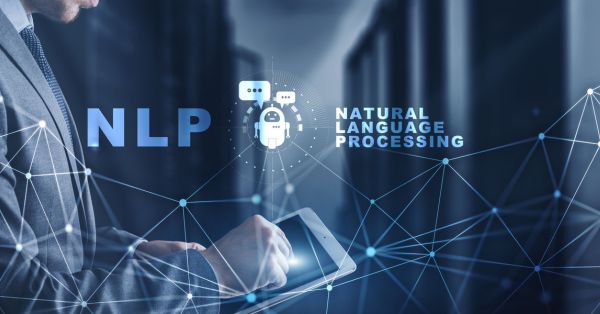Natural Language Processing (NLP) in Simple Terms
Natural Language Processing (NLP) has become an integral part of our daily lives, impacting everything from search engines to voice assistants. But what exactly is NLP? Why is it important? How does it work? And what does the future hold for this fascinating field? In this article, we’ll explore NLP in simple terms, dissecting its key components, discussing its applications, and delving into emerging trends and challenges.
Understanding the Basics of Natural Language Processing
Before we dive into the technicalities, let’s start by understanding the essence of Natural Language Processing itself. In simple terms, NLP is a branch of artificial intelligence that focuses on the interaction between computers and human language. AI Chat platforms like Satisfi Labs utilize this technology to enable machines to understand, interpret, and generate human language, making communication between humans and computers more seamless and intuitive.
What is Natural Language Processing?
At its core, NLP involves the development of algorithms and models that can analyze and extract meaning from vast amounts of natural language data. This data can include anything from written text to speech and even sign language. By leveraging the power of computational linguistics and machine learning, NLP enables computers to comprehend human language patterns, semantics, and nuances.
The Importance of NLP in Today’s World
The significance of NLP cannot be overstated in today’s data-driven world. With the explosive growth of digital content, the ability to process and extract value from textual information has become paramount. NLP not only facilitates efficient information retrieval and understanding but also empowers businesses to uncover valuable insights hidden within unstructured data.
Key Components of Natural Language Processing
NLP comprises several essential components, each playing a crucial role in enabling machines to comprehend human language. Let’s take a closer look at two of the fundamental components:
Syntax and Semantic Analysis
Syntax analysis focuses on the grammatical structure of sentences, ensuring that the words are arranged in a meaningful way. This process involves tasks such as part-of-speech tagging and parsing, which deal with identifying the role of each word and establishing relationships between them. On the other hand, semantic analysis involves understanding the meaning behind words, phrases, and sentences. It helps computers go beyond surface-level understanding and interpret the contextual nuances of human language.
Discourse Integration and Pragmatic Understanding
Moving beyond individual sentences, discourse integration aims to comprehend the larger context and coherence of a piece of text. It involves tasks such as anaphora resolution (identifying pronouns and their referents) and entity recognition (identifying named entities like people, organizations, and locations). Additionally, pragmatic understanding focuses on understanding the intentions, beliefs, and goals of human speakers, ensuring that machines can respond appropriately in different conversational contexts.
How Does Natural Language Processing Work?
At the heart of NLP lies the integration of machine learning algorithms and linguistic knowledge. Machine learning algorithms, particularly deep learning models like neural networks, have revolutionized the field of NLP. These algorithms learn from massive amounts of labeled data, extracting patterns and relationships that enable them to understand and generate human language. Pairing this with linguistic knowledge, which provides the necessary structure and rules, allows NLP models to achieve remarkable accuracy and flexibility in language processing.
The Role of Machine Learning in NLP
Machine learning algorithms, specifically supervised learning methods like recurrent neural networks (RNNs) and transformer models, have proven to be incredibly effective in various NLP tasks. They have made significant strides in areas such as machine translation, sentiment analysis, and question-answering. By exposing models to vast amounts of annotated data, these algorithms can learn to generalize patterns and make predictions accurately.
The Process of Text Transformation
When it comes to processing natural language, the first step typically involves transforming the raw text into a more structured representation. This process often involves tokenization, where text is divided into smaller units, such as words or characters. Additionally, text normalization techniques, like stemming and lemmatization, are applied to reduce linguistic variations and ensure consistent representations. These transformed representations then serve as the input for various NLP models and algorithms.
Applications of Natural Language Processing
NLP finds applications in several domains, revolutionizing the way we interact with technology. Let’s explore some of its key applications:
NLP in Search Engines
Search engines leverage NLP techniques to deliver more accurate and relevant search results to users. By understanding the context and intent behind user queries, search engines can retrieve web pages, documents, or answers that are most likely to satisfy the user’s needs. Semantic search, in particular, allows for a deeper understanding of user intent, resulting in better search outcomes.
NLP in Voice Assistants
Voice assistants rely heavily on NLP to provide an intuitive and seamless user experience. By processing spoken language, these assistants can understand user commands, answer questions, and perform tasks. Natural language understanding and speech recognition play a vital role in enabling voice assistants to parse and interpret human language accurately, facilitating effective communication with users.
The Future of Natural Language Processing
The field of NLP is continuously evolving, paving the way for exciting advancements and possibilities. Let’s take a glimpse into what the future might hold:
Emerging Trends in NLP
One of the emerging trends in NLP is the integration of multimodal information, such as combining text with images or videos. This allows for more comprehensive language understanding and facilitates tasks like image captioning and video summarization. Additionally, there is growing interest in zero-shot learning, where NLP models can generalize to unseen tasks or languages by leveraging transfer learning techniques.
Challenges and Opportunities in NLP Development
While NLP has made impressive strides, it still faces significant challenges. One such challenge is the understanding of context and commonsense reasoning, which remains elusive for machines. Additionally, the ethical implications of NLP, such as bias in language models or the potential for misuse, require careful consideration. However, these challenges present opportunities for researchers and developers to push the boundaries and harness the full potential of NLP for societal benefits.
Final Thoughts Natural Language Processing (NLP) in Simple Terms
Natural Language Processing is a captivating field that continues to reshape our interactions with technology. By enabling machines to understand and generate human language, NLP opens the door to limitless possibilities. With ongoing advancements and emerging trends, the future of NLP promises even more innovative applications and breakthroughs. As we navigate this rapidly evolving landscape, it is essential to embrace the potential of NLP while remaining vigilant about its challenges and ethical implications.








